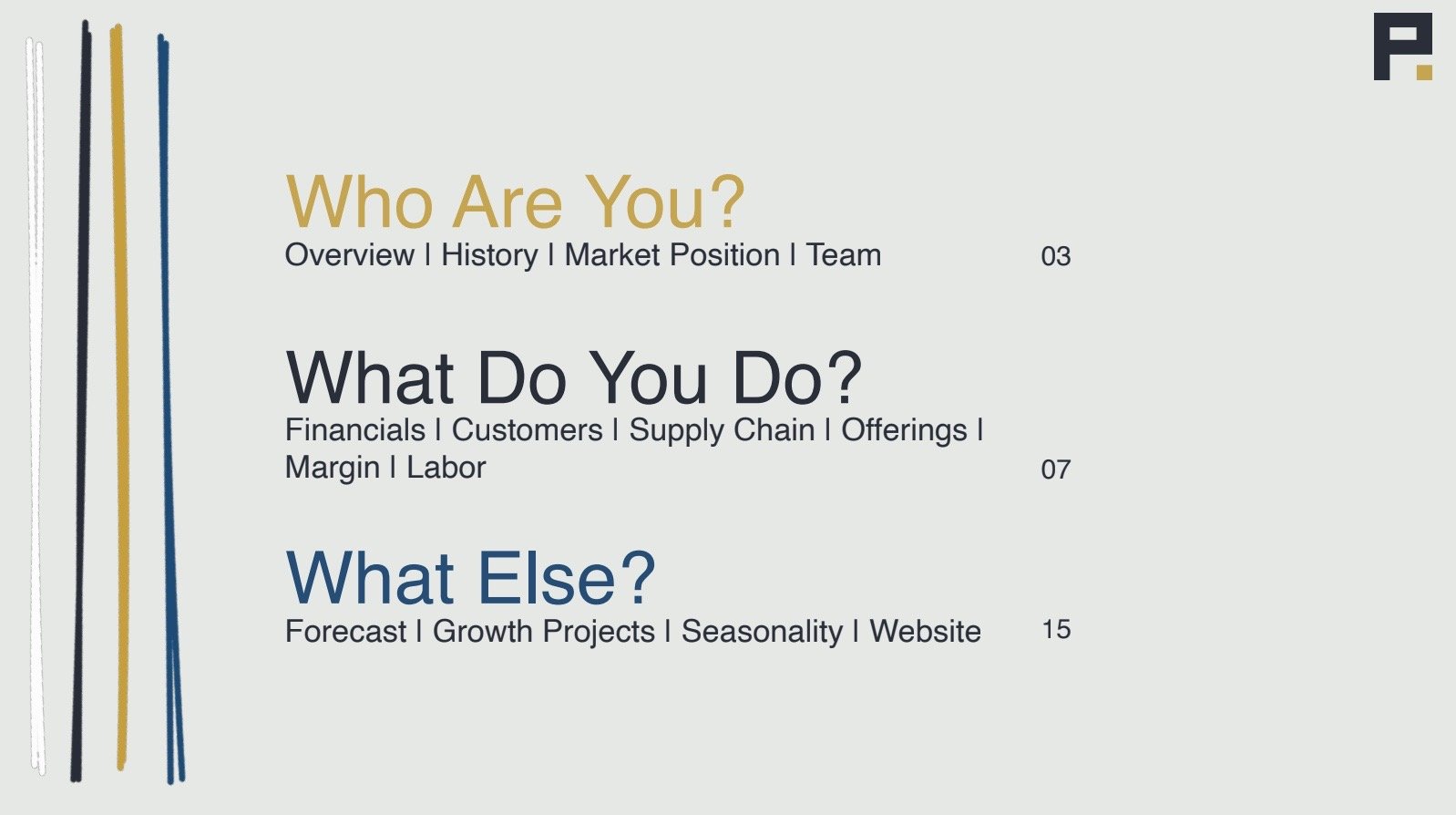Cover Page & Table of Contents
Use this space to convey something. It could be an assortment of products, a picture of the team, or something else.
When we load the PDF, what’s the first thing we should see?
Following the cover page is typically a Table of Contents and Disclosures, including the appropriate point of contact for any follow up conversations.
Overview
Think of the Overview page as your stat card. This page is less about story and more focused on providing a dense dataset that encourages the reviewer to spend more time reading the subsequent pages.
A perfect Overview page answers the following questions:
An Overview page done well markets the opportunity. But too often it’s overstuffed with, ironically, marketing. The Overview should address reality, and if you spend too much content on what could be in the future or broader industry trends, we may assume that’s because reality is slim or bad.
Use the space on what you want to address upside. Many investors want to be useful apart from money. Outlining things you want help to execute on is an invitation, not a sign of weakness. And knowing where you want to go is always helpful.
To stand on a soapbox for just a moment, please don’t say your transaction objective is for the business to get to the “Next Level.” This term appears in way too many CIMs and – as most business jargon eventually does – has become meaningless. Do you want to grow locations? Say that! Do you want to hire more executive talent? Say that. Do you want to expand your offering line? Say that! Do you have a financial goal? Say that. Specificity is helpful in communicating your situation, and much more compelling to us as investors.
Who Are You?
Company History
Once a reviewer decides to go past the Overview, it’s time to start telling your story. How to tell it is dependent on your business, your team, and, well, you. Sometimes a narrative is best, while other times a graphical outline works really well. The point of the history is to gain a cultural understanding of the business and brand, and also to appreciate its pivotal points and sources of growth and sustainability.
Your history should address how the company was formed. This is an opportunity to highlight brand heritage and barriers to entry. It doesn’t have to be a completely rosy story! Overcoming challenges speaks to capability much more than a flawless record.
A timeline should be included in some form, outlining major milestones like changes in ownership and leadership, significant changes in scale, location growth, any acquisitions, and other significant events. Designating years is helpful, but you don’t need to go into tremendous detail (e.g., 2018 - Acquired Charge A Company from Tom Jones).
Your history is also one of the few places where broader industry events may be relevant to add. In general, use the CIM to exclusively present your company. But if there were opportunity-shifting changes in the industry, educate us as investors on that (e.g., new technologies, regulatory changes).





